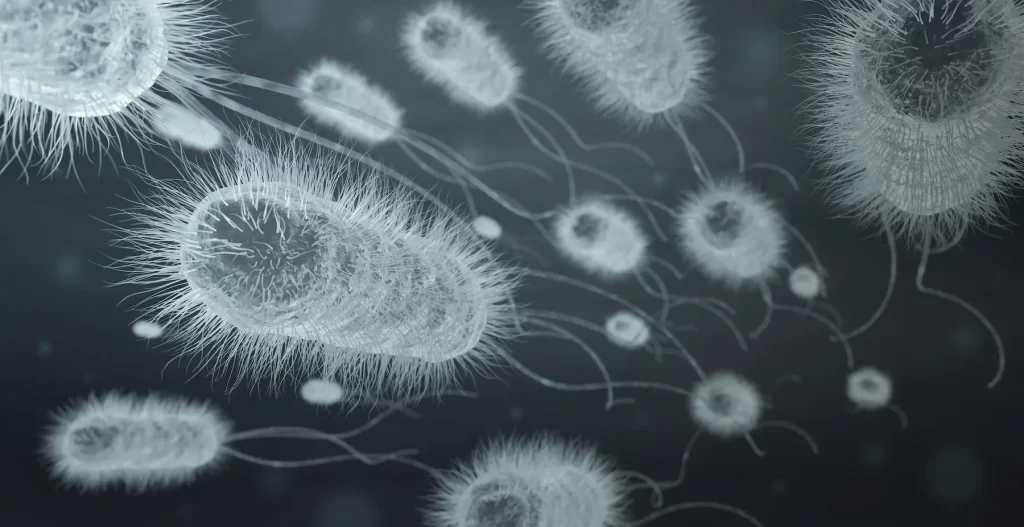
Explore my darkest days with Bartonella, POTS dysautonomia, and postpartum depression—and the hope and healing I found beyond misdiagnoses.
I still remember the phone call. It was 2 a.m., and I was holding my chest, convinced my heart was about to give out. My husband was away on a business trip, and through tears, I said, “I’m so sorry to ask this, but I think I’m going to die. My heart hurts so much, and I can’t do this anymore.” I wasn’t just physically broken—I was mentally shattered. That moment is burned into my memory because it marked the lowest point in my fight with Bartonella and Dysautonomia.

I’ve spent years helping women uncover hidden health issues, but nothing could have prepared me for the mental and physical toll Bartonella took on me. My journey wasn’t just about physical symptoms—it was about survival. I’m sharing this because if you’re feeling like there’s no way out, I want you to know: there is hope, and it starts with understanding what’s happening in your body.
It all began after childbirth. At first, I thought the overwhelming fatigue, depression, and anxiety were normal “mom life” struggles. But as weeks turned into months, my symptoms spiraled. I couldn’t sleep—at all. My mind raced with obsessive, intrusive thoughts. I felt like a shell of myself.
Could your symptoms be more than just postpartum struggles? Take our Parasites Quiz to uncover more about potential underlying issues and gain insights into your health journey.
Doctors told me it was postpartum depression, and while that was part of it, the truth was so much deeper. The physical pain was unbearable—especially the heart pain. I genuinely thought I’d have a heart attack. My dizziness was constant, and every time I stood up, my heart raced out of control. The anxiety became paralyzing, and the depression? Unrelenting.
At my worst, I was trapped in a cycle of severe OCD-like thoughts that centered around my newborn’s safety. I was consumed with questions like, “Is he breathing? What if he stops breathing while I’m asleep? What if he cries and I can’t hear him because I’m too deeply asleep?” These thoughts tormented me so relentlessly that I couldn’t let myself rest. Sleep became impossible, and my body and mind spiraled further into exhaustion. Despite how real and overwhelming it all felt, I was misdiagnosed over and over again, prescribed treatments that didn’t help, and left with the sinking feeling that my suffering was all in my head.
One night, after months of no sleep and unbearable chest pain, I reached my breaking point. I called my husband, sobbing, telling him I couldn’t see a way out. He cut his trip short and came home, but I still felt trapped in my body—a body that felt like it was betraying me.
Feeling overwhelmed? Connect with our community for support and shared experiences.
After hitting endless dead ends, I finally had a breakthrough during a late-night phone call with a fellow practitioner. As I shared the relentless symptoms I was facing, she paused and said, “It sounds like you’re battling BART—Bartonella. Have you checked yourself? We practitioners are so dedicated to helping our clients that we sometimes overlook our own health.” Her words hit me like a lightning bolt. Despite being a practitioner myself, I hadn’t even considered Bartonella as the root cause. Testing soon revealed the truth: I had Bartonella, a stealthy and often underestimated bacteria that can be even more debilitating than Lyme disease. This wasn’t just a physical infection—it was wreaking havoc on my autonomic nervous system (ANS), triggering a cascade of symptoms known as Dysautonomia.
To learn more about Bartonella and its consequences, you can read this post.

With the right diagnosis came the first glimmers of hope. Treating Bartonella was a process—it didn’t happen overnight—but it was possible. My care included:
Day by day, I started to feel like myself again. The anxiety lifted. My heart stopped hurting. And most importantly, I regained my hope.
Bartonella damages small blood vessels, cutting off oxygen to critical areas like the brain and heart. This not only triggers Dysautonomia symptoms but can also lead to debilitating anxiety and depression.
For a deeper understanding of how these conditions are connected and how to recognize early warning signs, read our latest article: Pre-Dysautonomia: How to Spot the Warning Signs Before It Takes Over.
If you’re battling unexplained symptoms, here are steps to take today:

I know what it’s like to feel like you’re drowning. To think there’s no way out. But I’m here to tell you that there is hope. With the right information, the right support, and the right mindset, you can reclaim your life.
You’re not alone in this fight. If you’re dealing with unexplained symptoms, trust your instincts and keep advocating for answers. You’ve already survived so much—and that strength will carry you through.
Ready to take the first step? Book a consultation and start your healing journey.
XX to your Invisible Battles & Unseen Strength,

Carola Le-Wriedt
Founder, Wellhistic & The Holistic Detox